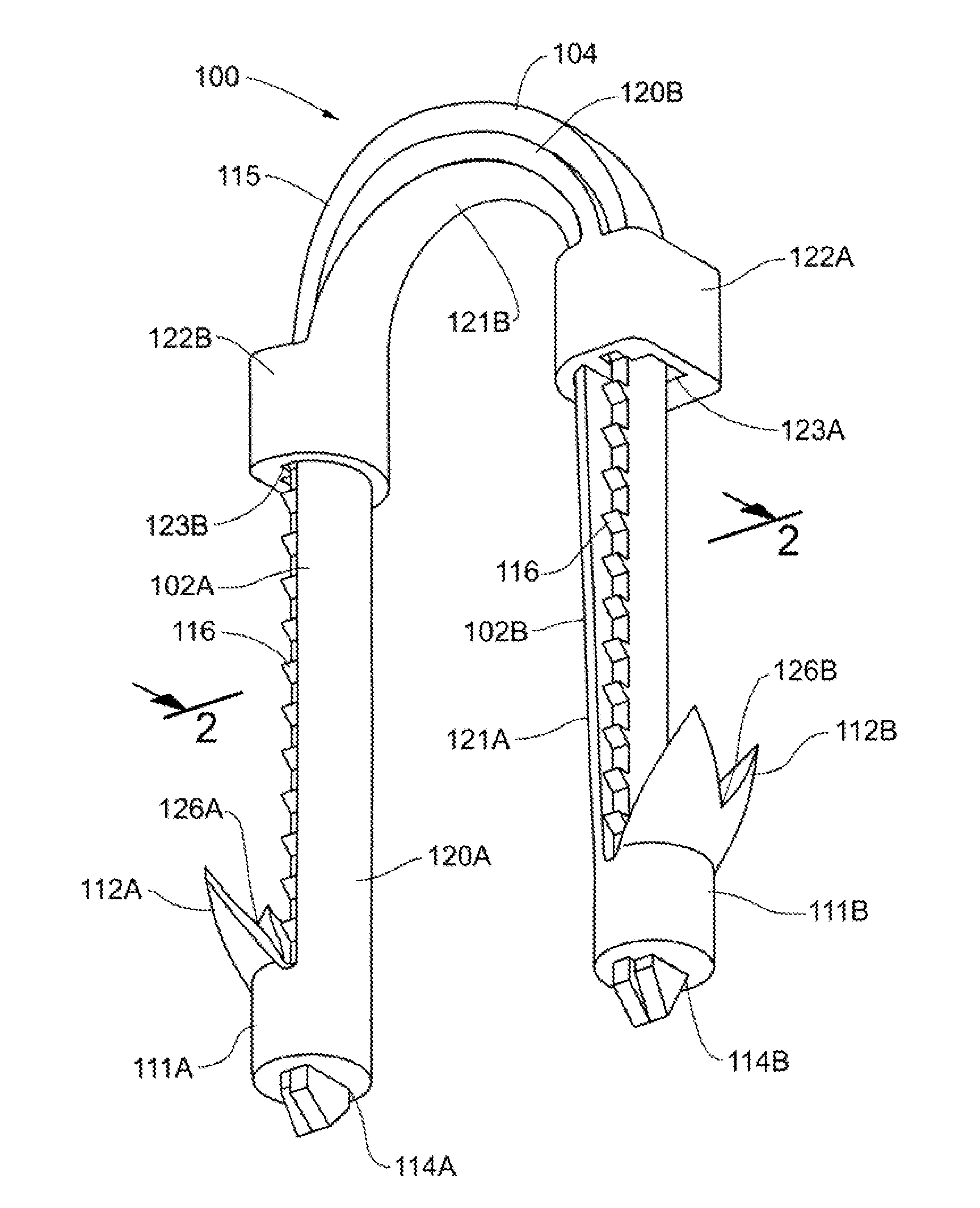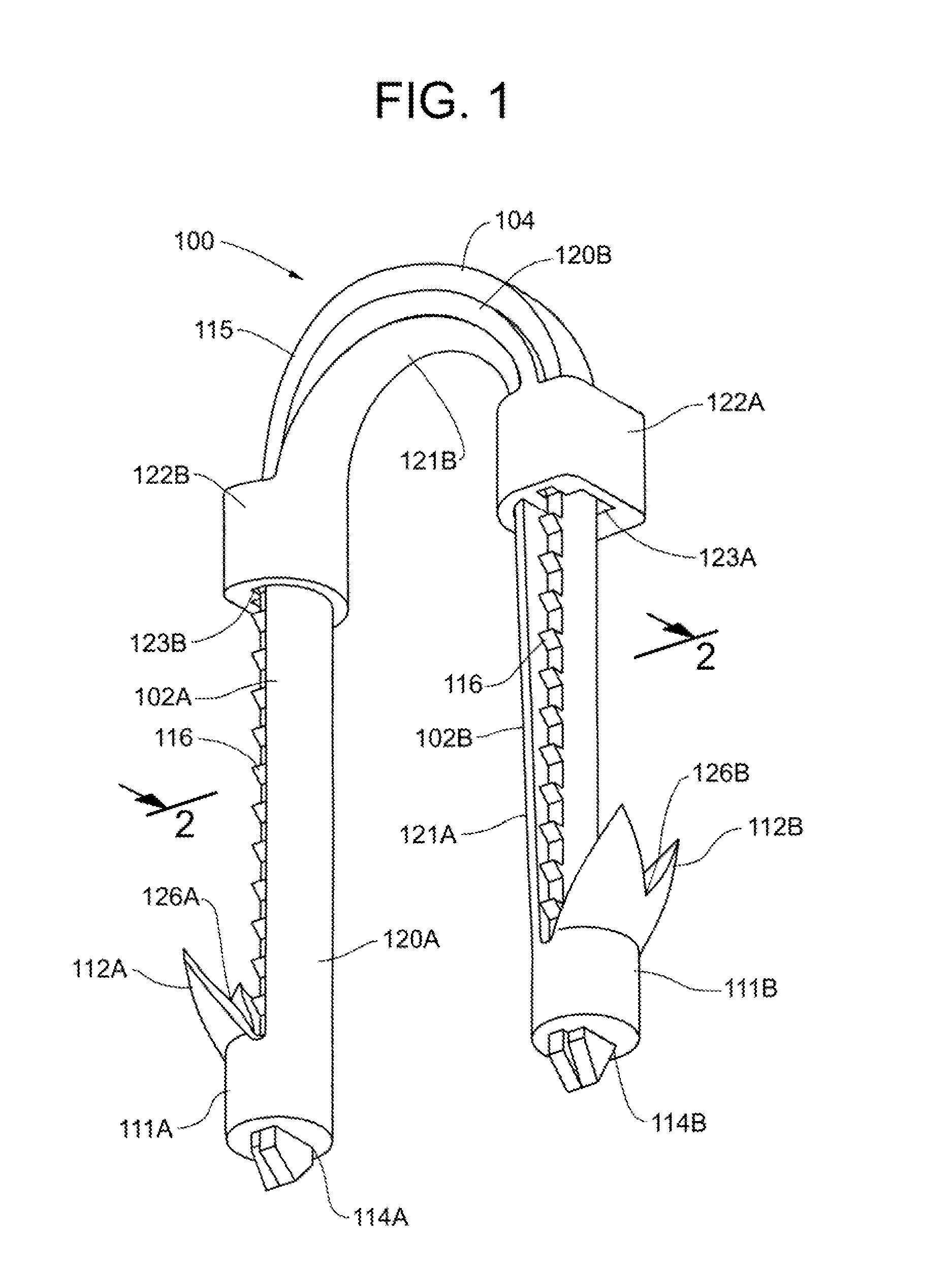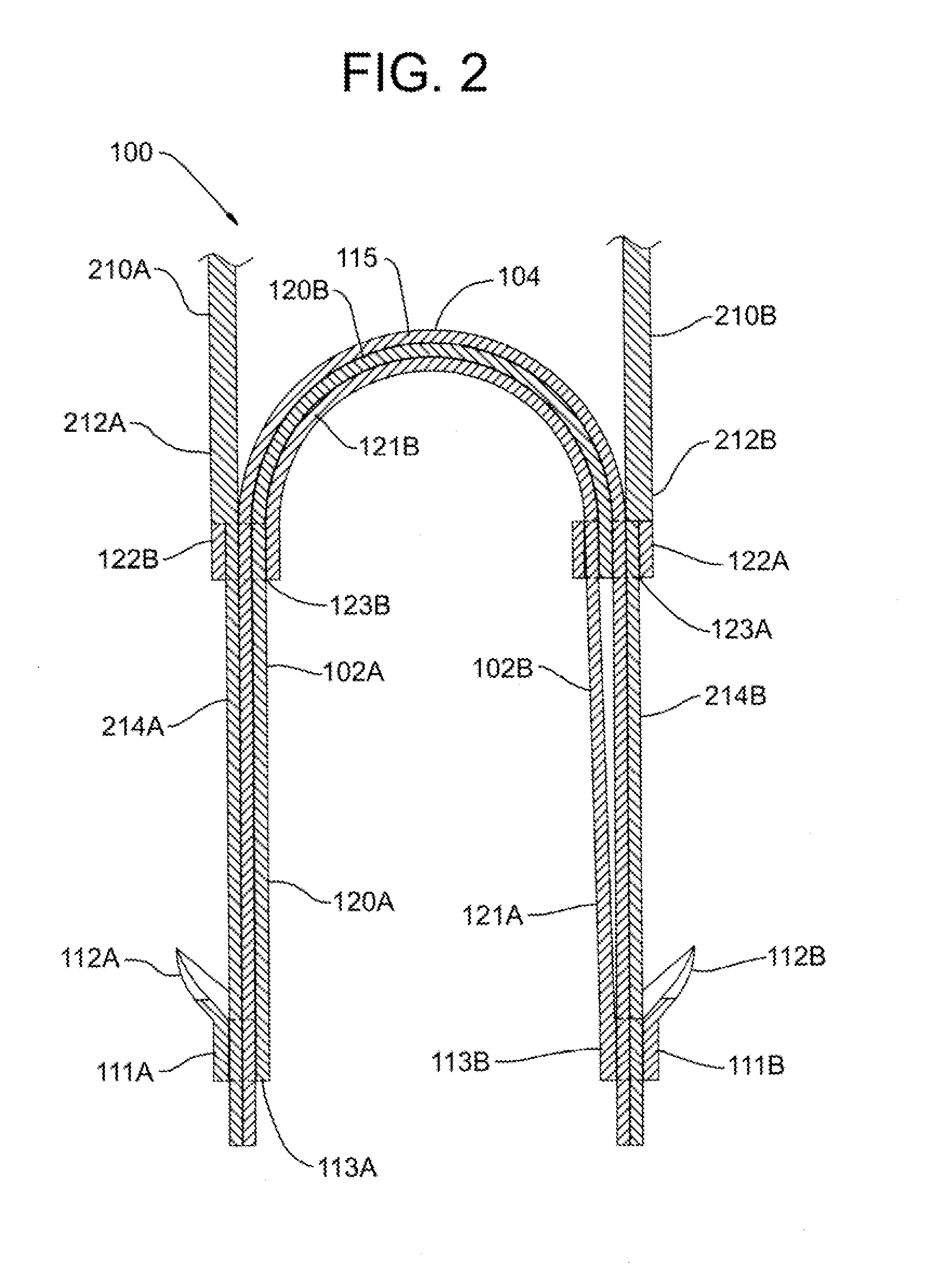Fasteners and fastener delivery devices for affixing sheet-like materials to bone or tissue
a technology of fasteners and sheets, applied in the field of orthopedic medicine and surgery, can solve the problems of rotator cuff damage, rotator cuff tendons damage, and common soft tissue injury to damage the rotator cuff or rotator cuff, and achieve the effect of increasing for
- Summary
- Abstract
- Description
- Claims
- Application Information
AI Technical Summary
Benefits of technology
Problems solved by technology
Method used
Image
Examples
Embodiment Construction
[0039]The following detailed description should be read with reference to the drawings in which similar elements in different drawings are numbered the same. The drawings, which are not necessarily to scale, depict illustrative embodiments and are not intended to limit the scope of the invention.
[0040]FIG. 1 is a perspective view illustrating an exemplary staple 100 in accordance with the present detailed description. With reference to FIG. 1, it will be appreciated that staple 100 may assume various orientations without deviating from the spirit and scope of this detailed description. Although the various parts of this exemplary embodiment are depicted in relative proportion to other parts of the staple 100, other configurations in size and orientation of the various parts are possible.
[0041]Staple 100 comprises a first arm 102A, a second arm 102B, and a bridge 104. As illustrated, the bridge 104 is formed, at least in part by a portion of the first arm 102A and second arm 102B. Ea...
PUM
| Property | Measurement | Unit |
|---|---|---|
| tension | aaaaa | aaaaa |
| stiffness | aaaaa | aaaaa |
| length | aaaaa | aaaaa |
Abstract
Description
Claims
Application Information
 Login to View More
Login to View More - R&D
- Intellectual Property
- Life Sciences
- Materials
- Tech Scout
- Unparalleled Data Quality
- Higher Quality Content
- 60% Fewer Hallucinations
Browse by: Latest US Patents, China's latest patents, Technical Efficacy Thesaurus, Application Domain, Technology Topic, Popular Technical Reports.
© 2025 PatSnap. All rights reserved.Legal|Privacy policy|Modern Slavery Act Transparency Statement|Sitemap|About US| Contact US: help@patsnap.com



